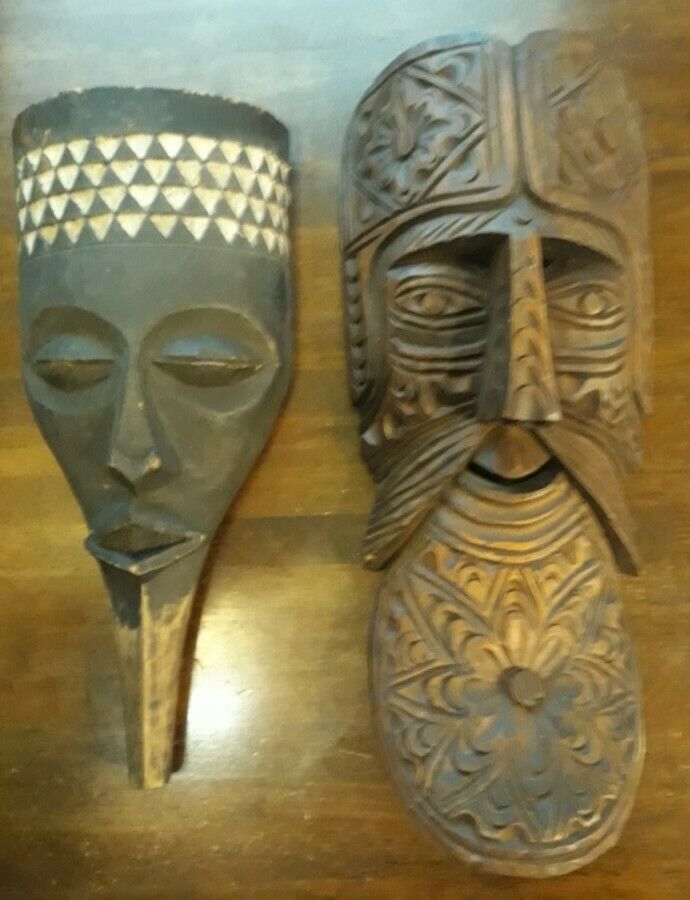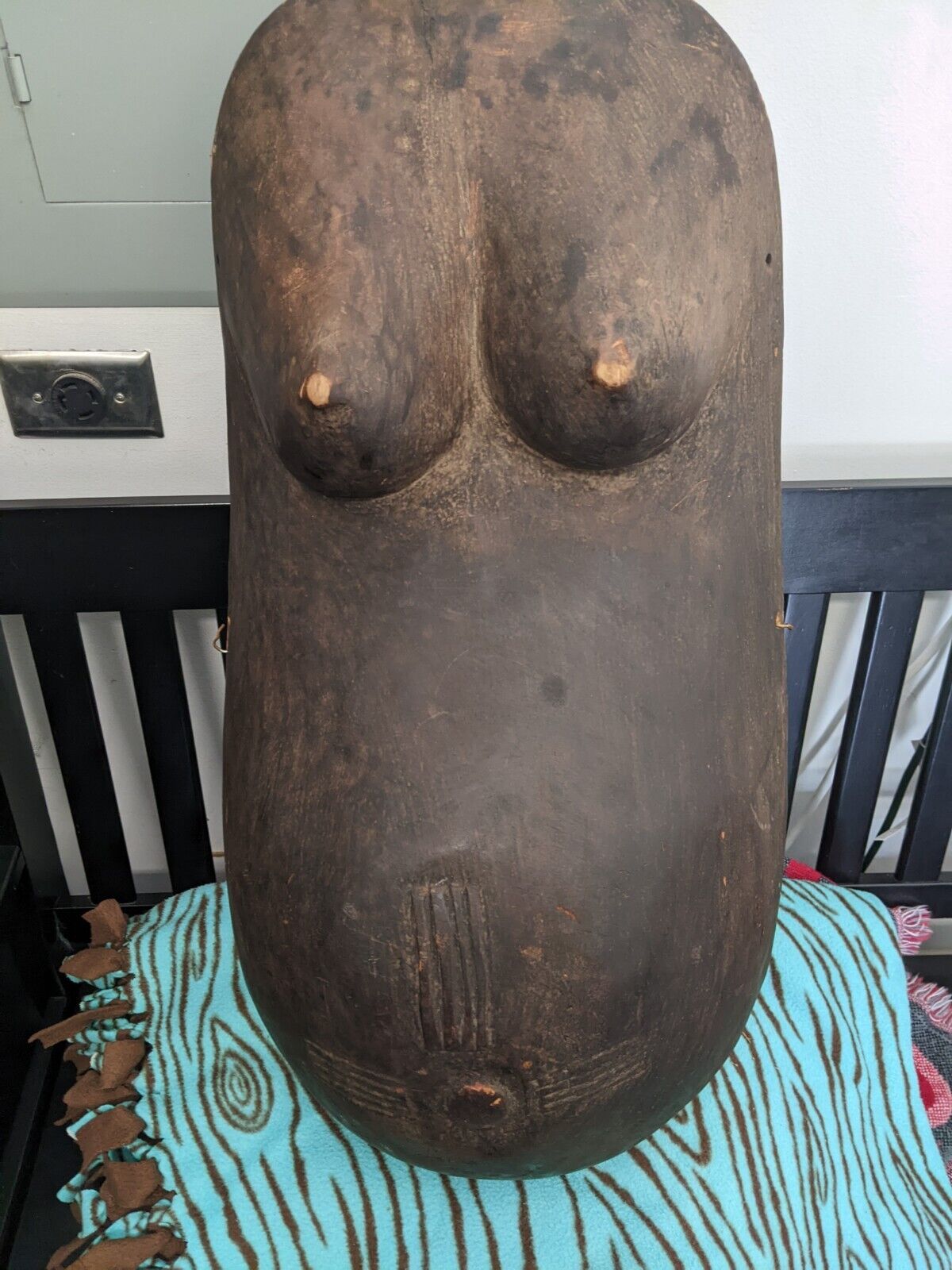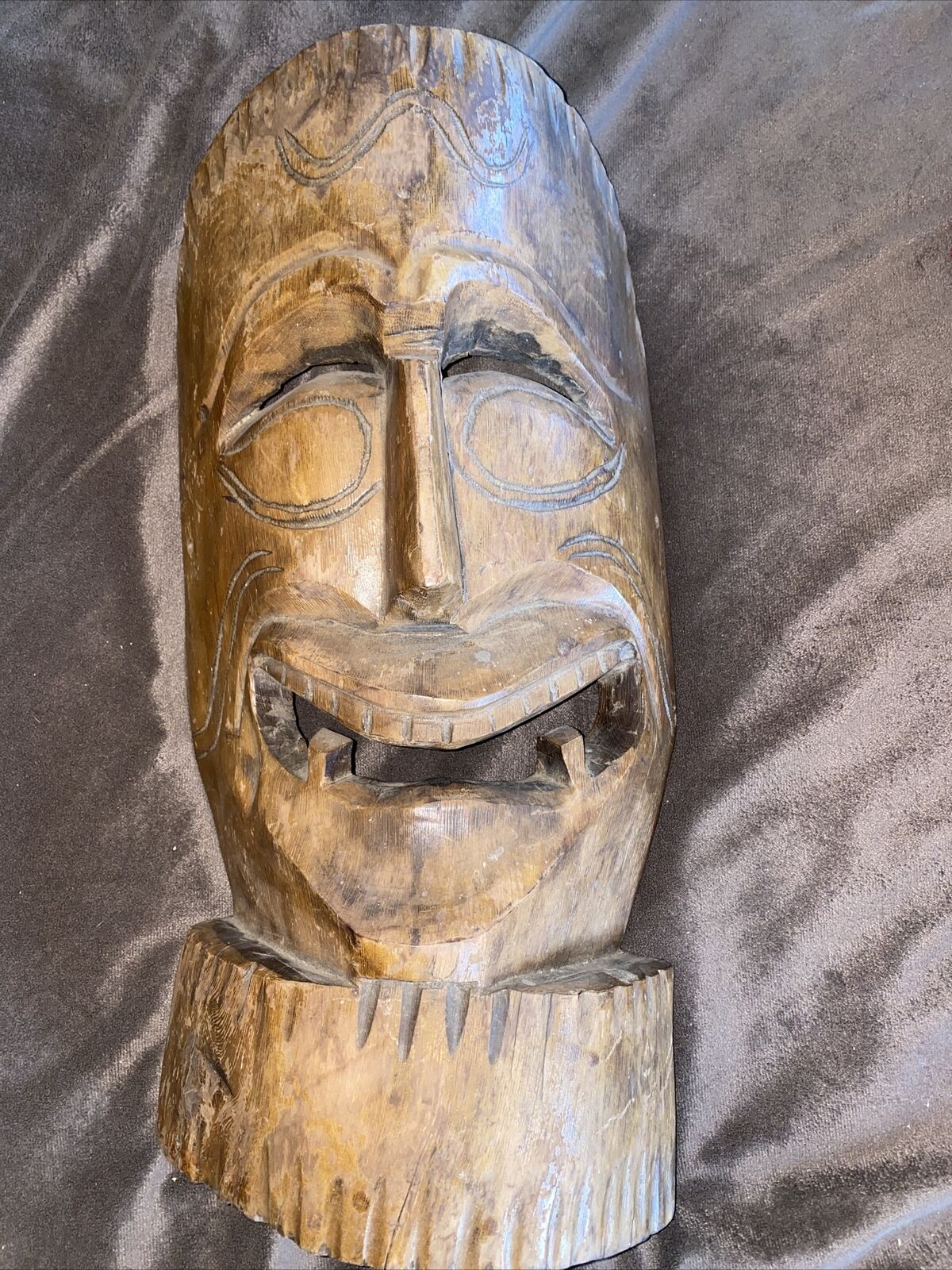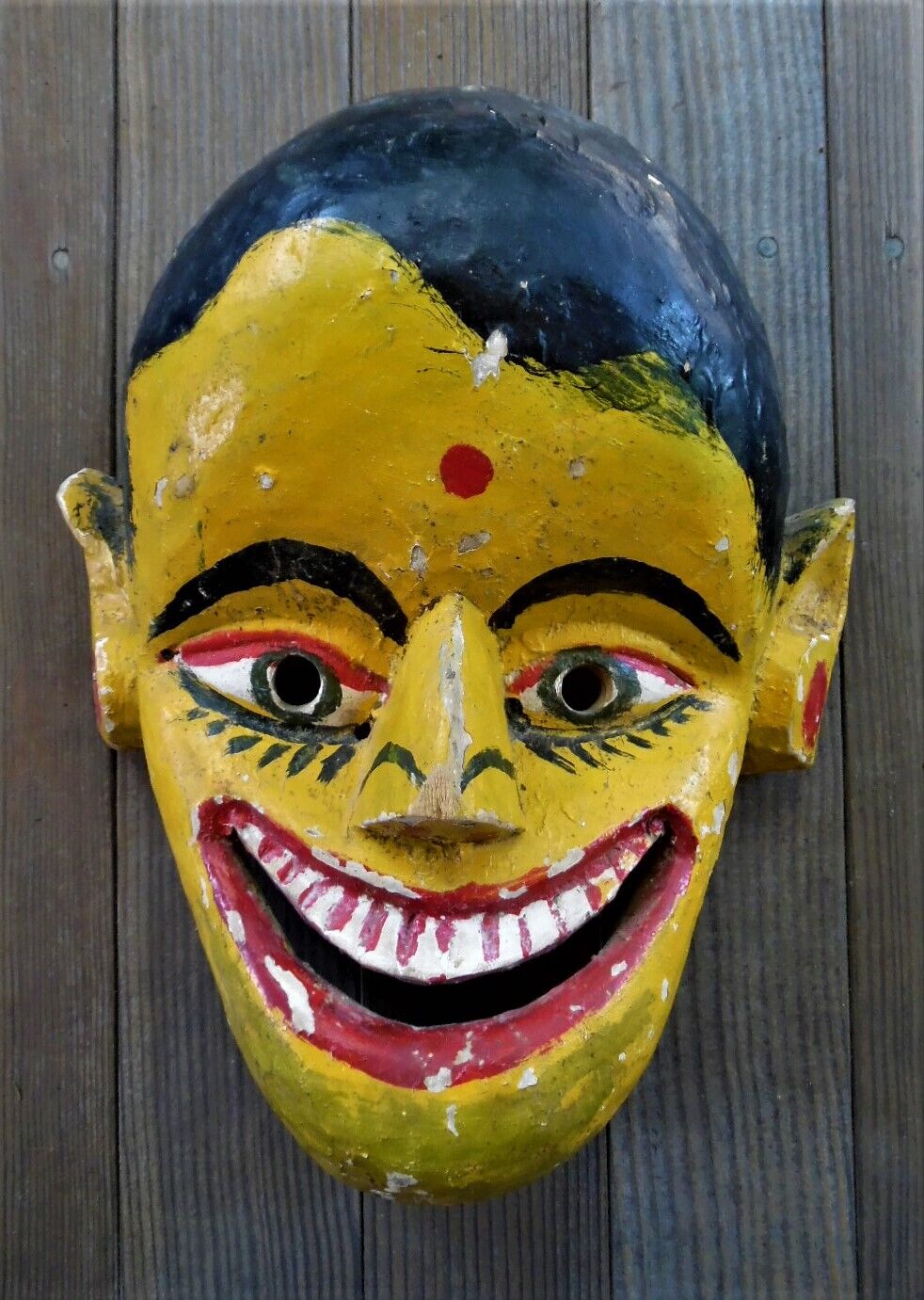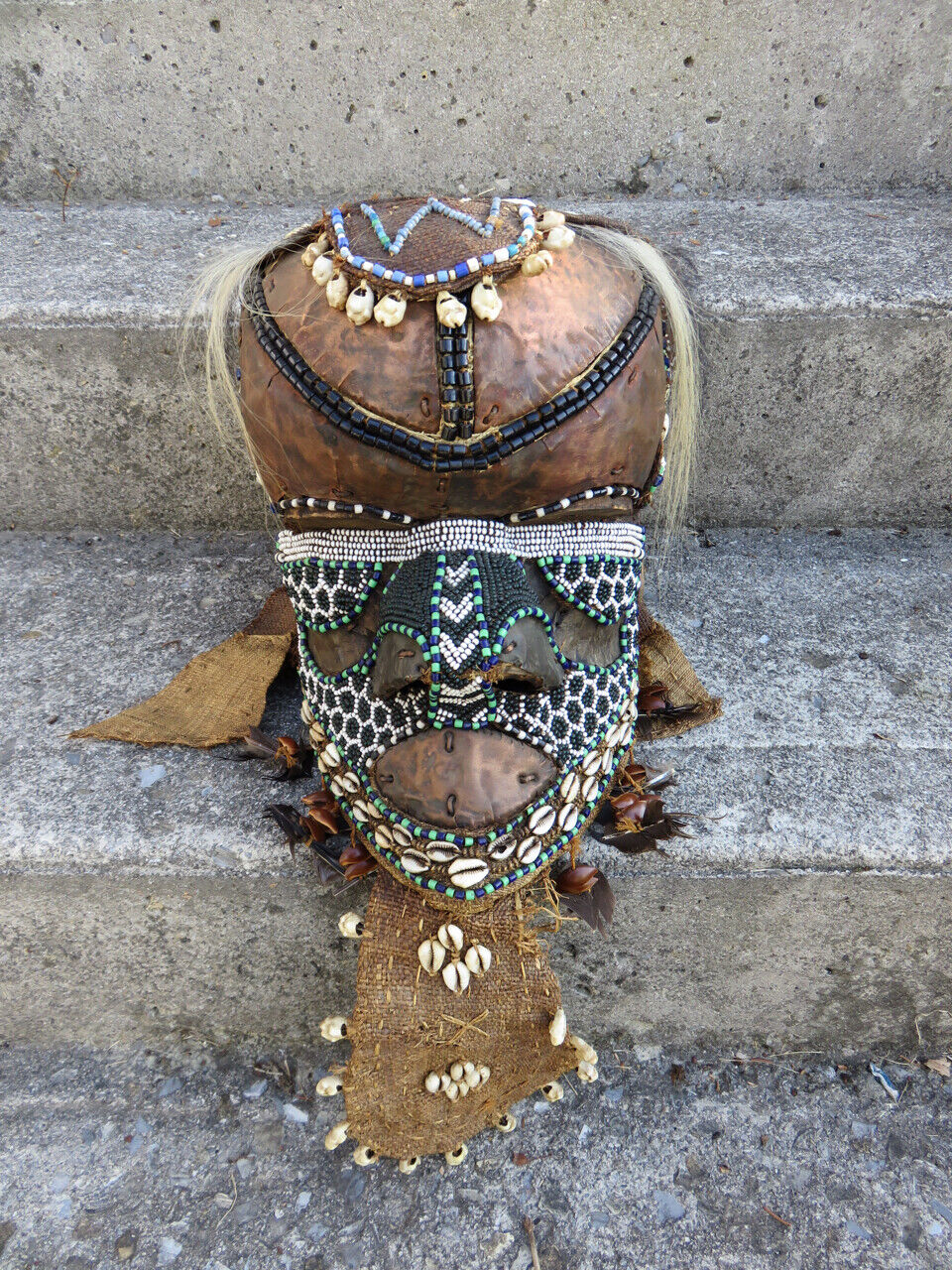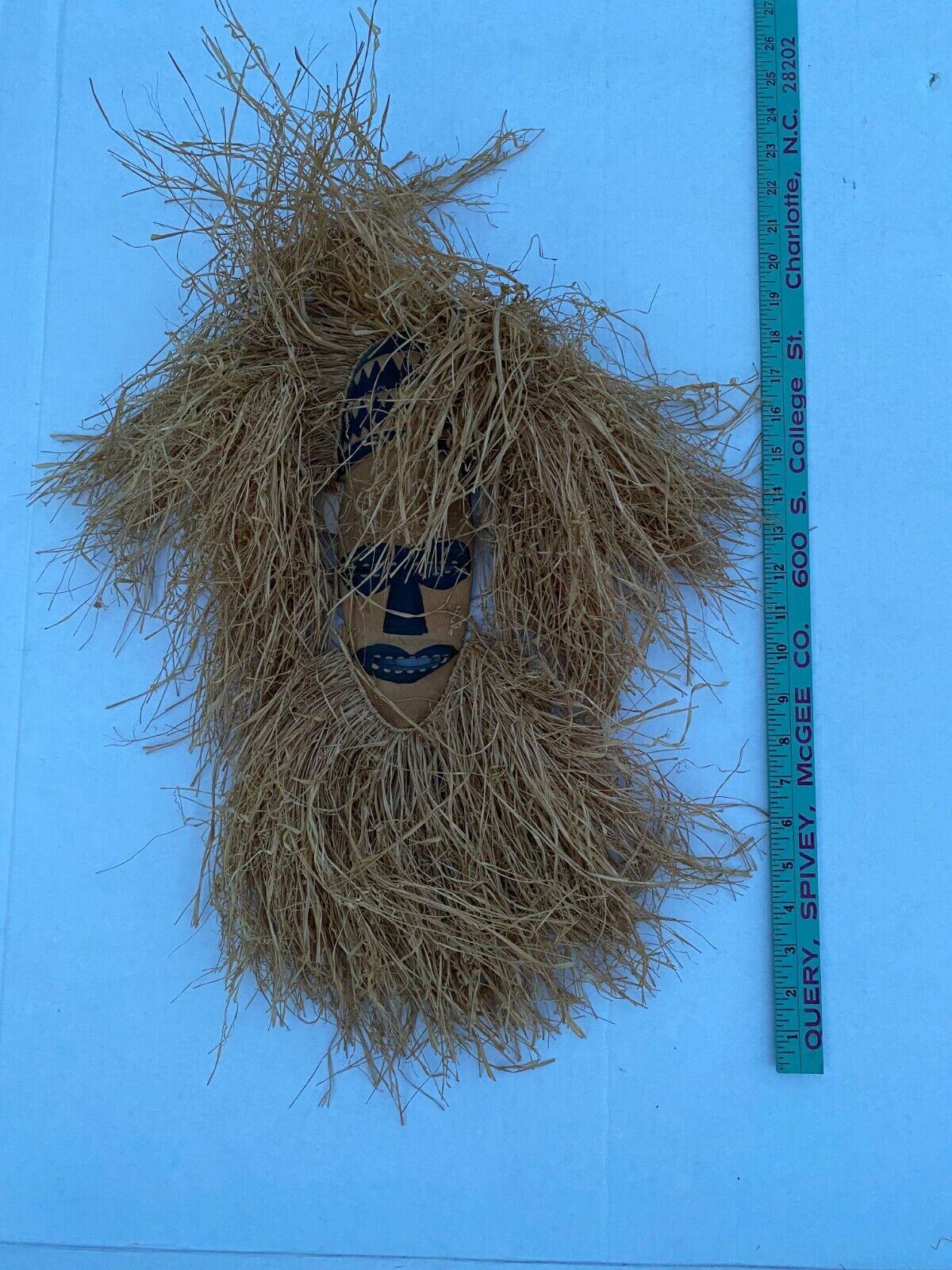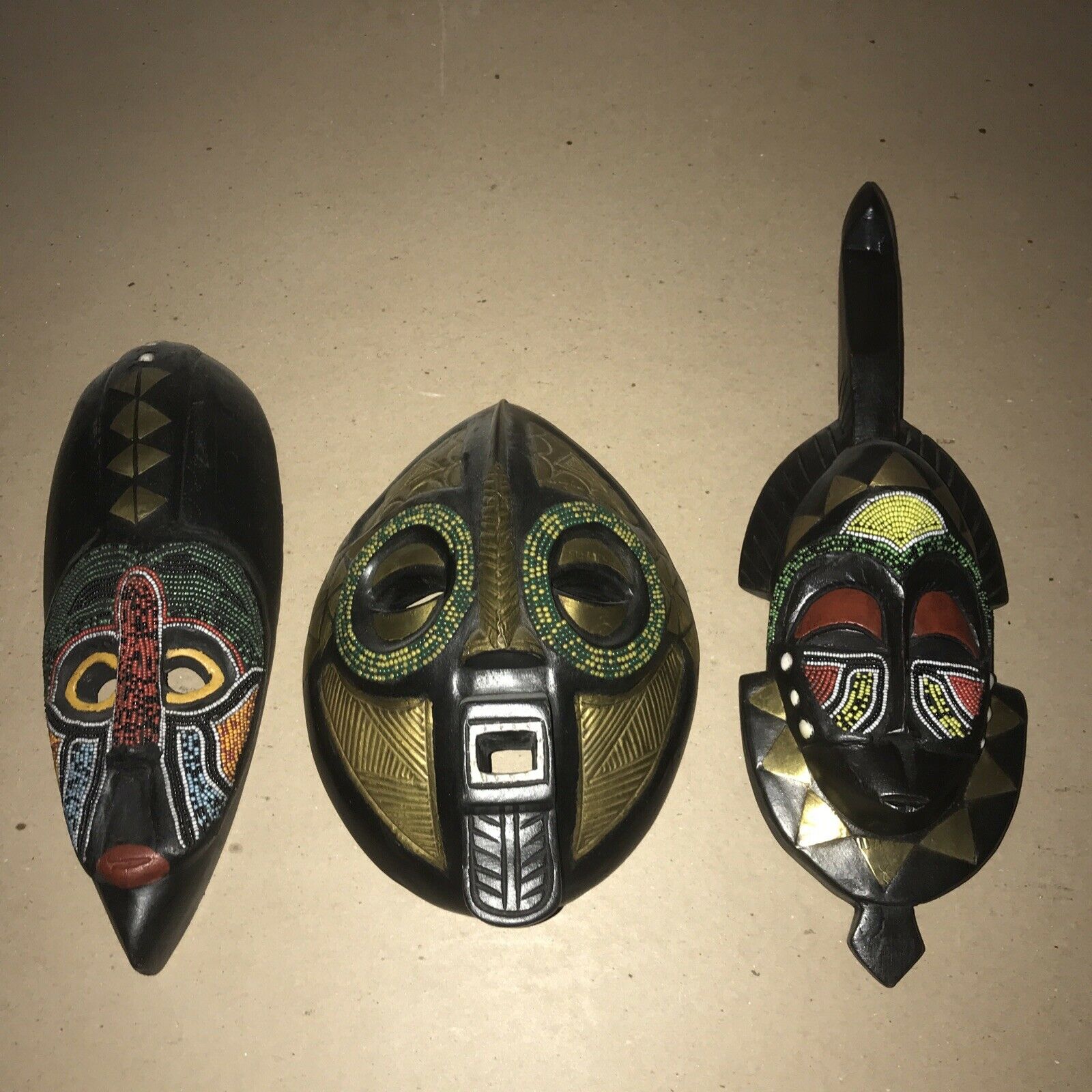-40%
African arts ,Bwoo kuba African Tribal Mask | Congo African Art
$ 168.96
- Description
- Size Guide
Description
TITLEXL Bwoo Antique African Tribal Mask | Congo African Art WITH STAND INCLUDED
TYPES OF OBJECT
Helmet
COUNTRY OF ORGIN
Democratic Republic of Congo
PEOPLE
Kuba
MATERIOLS
Wood, glass beads, cowrie shells, raffia fibers
APPROXIMATE AGE
20th Century
HEIGHT (IN)
33 cm-13 inches
WIDTH(IN)
61 cm-24 inches
DEPTH(IN)
37 cm-14 inches
DIMENSIONS
Height: 13 Inches
Width: 24 Inches
Depth: 14 Inches
OVERALL CONDITION
Fair. Most of our pieces have spent decades on at least two continents, Africa and Europe and have been treasured by several owners. Small splits, scrapes and cracks are a normal part of their patina attesting to their age and extensive use. We examine each piece carefully when we receive it and report any damage we find in our listings. Please look carefully at the pictures which may also reveal condition and damage.
DAMAGE
dirty, stained beads and shells. some loose stitching, missing beads and stretched raffia
Additional Information:
A good example of a Kuba Bushoong Moshambwooy mask. Variants of such a mask are also found among the the Ngoongo, sub-group of Kuba people, where they are known as Mukyeem or mukenga mask
For a long time people used to call this type of masks moshambwooy, but there is a substantial difference between these two masks. Examples of Royal
Moshambwooy mu Shall
are very rare to find. Most of the
s
o-called
Moshambwooy
housed by public or private collections are of Ngongo workmanship type named
Mukyeem
mask. They all are helmet masks and decorated with a lot of cowrie shells and beads. On
Mukyeem
mask, the headdress is extended by a long, central, trunk-like appendage (sometimes with two offshoots) suggesting the elephant's tusk. Attached to the end of the trunk is raffia fibers , which can be replaced by a bright red, tuft of parrot feathers.
Moshambwooy
is usually topped with a high structure decorated with feathers. There is no elephant tusk-like on moshambwooy (see examples on Face of Spirits).
The greatest of the three "most significant" masks of the BaKuba, this mask represents Woot, the "first ancestor," rather like Adam. He and his brother vied for the affection of their sister, who later married Woot. The mask has a large protruding horn in the form of a bent elephant tusk and decorated with cowrie shells and beads . This horn gives to the name its name of Elephant mask. The headdress is also nicely decorated with cowrie shells. Other details include wooden ears, and nose, eyes in cowrie shells and eyebrows made out of beads.The mask is decorated with a huge raffia ruff.The face is covered with raffia.
This mask is of Ngoongo workmanship. While they have the same shape as the Moshambooy of Kuba Bushoong, the Ngongo masks of this type bear the name Mukyeem. There are small differences, but both masks are associated with power of nature spirits. Both have feathers and an elephant trunk, symbols of authority relating to kingship. They are both helmet masks. On the Mukyeem mask (shown here) the geometric-shaped frame is made of palm fiber with the face inset on a cotton cloth. The carefully sculpted, middle chignon is covered with cowries and beads, symbols of wealth. The headdress is extended by a long, central, trunk-like appendage with two offshoots suggesting elephant tusks.
This type of masks was worn only by princes and dignitaries and used in important ceremonies involving the initiation of young princes (Babieen) or at the burial rites of an important member of the court. Other variants of
Mukyeem mask are also
found among the Ngeende, and Kete.
Track Page Views With
Auctiva's Counter









